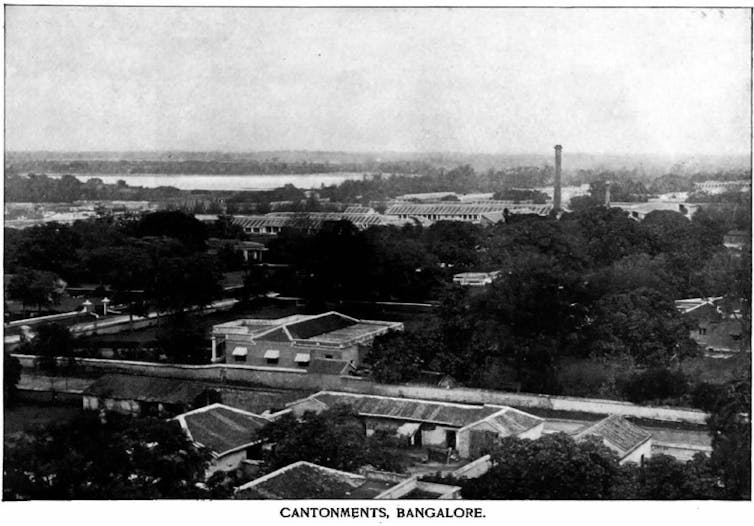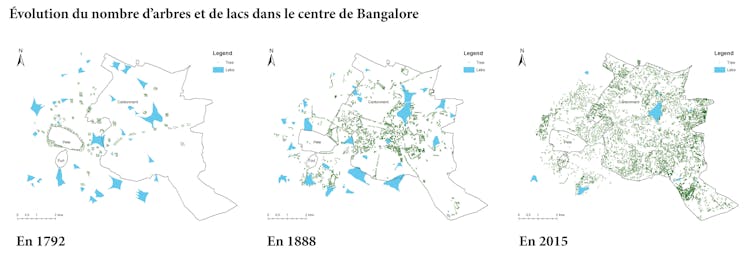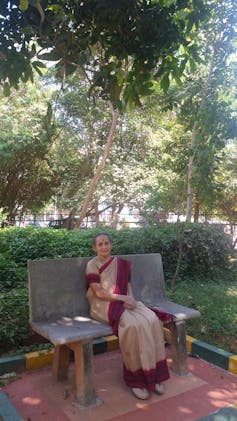டிஎன்பிஸ்சி ஒருங்கிணைந்த குடிமை பணிகள் தேர்வு - I | Syllabus in Tamil
2 ஜன., 2022தொகுதி-I பணிகள்
முதல் நிலை தேர்வு
பொது அறிவு (பட்டப்படிப்பு தரம்)
கொள்குறி வகைகளுக்கான தலைப்புகள்
அலகு – I: பொது அறிவியல்
(i) அறிவியல் அறிவு மற்றும் அறிவியல் உணர்வு - பகுத்தறிதல் - பொருள் உணராமல் கற்றலும் - கருத்துணர்ந்து கற்றலும் - கடந்தகாலம் , நிகழ்காலம், எதிர்காலம் பற்றி புரிந்து கொள்வதற்கான ஒரு கருவி அறிவியல்.
(ii) பேரண்டத்தின் இயல்பு - பொது அறிவியல் விதிகள் – இயக்கவியல் - பருப்பொருளின் , விசை , இயக்கம் மற்றும் ஆற்றல் - அன்றாட வாழ்வில் இயக்கவியல் , மின்னியல், காந்தவியல், ஒளி , ஒலி, வெப்பம் , அணுக்கரு இயற்பியல், லேசர் (LASER), மின்னணுவியல் மற்றும் தகவல் தொடர்பியல் ஆகியவற்றின் அடிப்படை கோட்பாடுகளின் பயன்பாடுகள்.
(iii) தனிமங்களும் சேர்மங்களும், அமிலங்கள் , காரங்கள் , உப்புகள், பெட்ரோலிய பொருட்கள், உரங்கள், பூச்சிகொல்லிகள்.
(iv) உயிரியலின் முக்கியகோட்பாடுகள் , உயிர் உலகின் வகைப்பாடு , பரிணாமம் , மரபியல், உடலியங்கியல், உணவியல், உடல் நலம் மற்றும் சுகாதாரம், மனிதநோய்கள்.
(v) சுற்றுப்புறச்சூழல் மற்றும் சூழலியல் .
அலகு - II - நடப்பு நிகழ்வுகள்
(i) வரலாறு - அண்மை நிகழ்வுகளின் தொகுப்பு - தேசியச் சின்னங்கள் - மாநிலங்கள் குறித்த விவரங்கள் - செய்திகளில் இடம்பெற்ற சிறந்த ஆளுமைகளும் இடங்களும் - விளையாட்டு - நூல்களும் ஆசிரியர்களும்.
(ii) ஆட்சியியல் - இந்தியாவில் அரசியல் கட்சிகளும் ஆட்சியியல் முறைமைகளும் - பொது விழிப்புணர்வும் (Public Awareness) பொது நிர்வாகமும் - நலன்சார் அரசுத் திட்டங்களும் அவற்றின் பயன்பாடும், பொது விநியோக அமைப்புகளில் நிலவும் சிக்கல்கள்.
(iii) புவியியல் - புவியியல் அடையாளங்கள்.
(iv) பொருளாதாரம் - தற்போதைய சமூக பொருளாதார பிரச்சனைகள்.
(v) அறிவியல் - அறிவியல் மற்றும் தொழில்நுட்பத்தில் அண்மைக்கால கண்டுபிடிப்புகள்.
அலகு - III : இந்தியாவின் புவியியல்
(i) அமைவிடம் - இயற்கை அமைவுகள் - பருவமழை, மழைப்பொழிவு, வானிலை மற்றும் காலநிலை - நீர் வளங்கள் - இந்திய ஆறுகள் - மண், கணிம வளங்கள் மற்றும் இயற்கை வளங்கள் - காடு மற்றும் வன உயிரினங்கள் - வேளாண் முறைகள்.
(ii) போக்குவரத்து - தகவல் தொடர்பு.
(iii) சமூகப் புவியியல் - மக்கள் தொகை அடர்த்தி மற்றும் பரவல் - இனம், மொழிக் குழுக்கள் மற்றும் முக்கியப் பழங்குடிகள்.
(iv) இயற்கைப் பேரிடர் - பேரிடர் மேலாண்மை - சுற்றுச்சூழல் மாசுபடுதல்: காரணிகளும் தடுப்பு முறைகளும் - பருவநிலை மாற்றம் - பசுமை ஆற்றல்.
அலகு - IV : இந்தியாவின் வரலாறும் பண்பாடும்
(i) சிந்துவெளி நாகரிகம் - குப்தர்கள், டில்லி சுல்தான்கள், முகலாயர்கள் மற்றும் மராத்தியர்கள் - விஜயநகர மற்றும் பாமினி அரசுகளின் காலம் - தென் இந்திய வரலாறு.
(ii) இந்திய சமூகப் பண்பாட்டு வரலாற்றில் மாற்றங்களும் தொடர்ச்சியும்.
(iii) இந்தியப் பண்பாட்டின் இயல்புகள், வேற்றுமையில் ஒற்றுமை - இனம், மொழி, வழக்காறு.
(iv) இந்தியா ஒரு மதற்சார்பற்ற நாடு, சமூக நல்லிணக்கம்.
அலகு - V : இந்திய ஆட்சியியல்
(i) இந்திய அரசியலமைப்பு - அரசியலமைப்பின் முகவுரை - அரசியலமைப்பின் முக்கிய கூறுகள் - ஒன்றியம், மாநிலம் மற்றும் யூனியன் பிரதேசங்கள்.
(ii) குடியுரிமை, அடிப்படை உரிமைகள், அடிப்படைக் கடமைகள், அரசின் நெறிமுறைக் கோட்பாடுகள்.
(iii) ஒன்றிய நிர்வாகம், ஒன்றிய நாடாளுமன்றம் - மாநில நிர்வாகம், மாநில சட்டமன்றம் - உள்ளாட்சி அமைப்புகள், பஞ்சாயத்து ராஜ்.
(iv) கூட்டாட்சியின் அடிப்படைத் தன்மைகள்: மத்திய - மாநில உறவுகள்.
(v) தேர்தல் - இந்திய நீதி அமைப்புகள் - சட்டத்தின் ஆட்சி
(vi) பொதுவாழ்வில் ஊழல் - ஊழல் தடுப்பு நடைவடிக்கைகள் - லோக்பால் மற்றும் லோக் ஆயுக்தா, தகவல் உரிமை - பெண்களுக்கு அதிகாரமளித்தல் - நுகர்வோர் பாதுகாப்பு அமைப்புகள் - மனித உரிமைகள் சாசனம்.
அலகு - VI : இந்தியப் பொருளாதாரம்
(i) இந்தியப் பொருளாதாரத்தின் இயல்புகள் - ஐந்தாண்டு திட்ட மாதிரிகள் - ஒரு மதிப்பீடு - திட்டக்குழு மற்றும் நிதி ஆயோக்.
(ii) வருவாய் ஆதாரங்கள் - இந்திய ரிசர்வ் வாங்கி - நிதி கொள்கை மற்றும் பணவியல் கொள்கை - நிதி ஆணையம் - மத்திய மாநில அரசுக்களிக்கிடையேனான நிதிப் பகிர்வு - சரக்கு மற்றும் சேவை வரி.
(iii) இந்திய பொருளாதார அமைப்பு மற்றும் வேலைவாய்ப்பு உருவாக்கம், நிலச் சீர்திருத்தங்கள் மற்றும் வேளாண்மை - வேளாண்மையில் அறிவியல் தொழில்நுட்பத்தின் பயன்பாடு - தொழில் வளர்ச்சி - ஊரக நலன்சார் திட்டங்கள் - சமூகப் பிரச்சனைகள் - மக்கள் தொகை, கல்வி, நலவாழ்வு, வேலைவாய்ப்பு, வறுமை.
அலகு - VII: இந்திய தேசிய இயக்கம்
(i) தேசிய மறுமலர்ச்சி - ஆங்கிலேயர் ஆட்சிக்கு எதிரான தொடக்க எழுச்சிகள் - இந்திய தேசிய காங்கிரஸ் - தலைவர்கள் உருவாதல் - பி.ஆர்.அம்பேத்கர், பகத்சிங், பாரதியார், வ.உ.சிதம்பரனார், ஜவகர்லால் நேரு, காமராசர், மகாத்மா காந்தி, மௌலானா அபுல் கலாம் ஆசாத், தந்தை பெரியார், ராஜாஜி, சுபாஷ் சந்திர போஸ் மற்றும் பலர்.
(ii) விடுதலைப் போராட்டத்தின் பல்வேறு நிலைகள்: அகிம்சை முறையின் வளர்ச்சி மற்றும் புரட்சிகர இயக்கங்கள்.
(iii) வகுப்புவாதம் மற்றும் தேசப்பிரிவினை.
அலகு - VIII: தமிழ்நாட்டின் வரலாறு, மரபு, பண்பாடு மற்றும் சமூக - அரசியல் இயக்கங்கள்
(i) தமிழ் சமுதாய வரலாறு, அது தொடர்பான தொல்லியல் கண்டுபிடிப்புகள், சங்க
காலம் முதல் இக்காலம் வரையிலான தமிழ் இலக்கிய வரலாறு.
(ii) திருக்குறள் :
அ) மதச் சார்பற்ற தனித்தன்மையுள்ள இலக்கியம்.
ஆ) அன்றாட வாழ்வியலோடு தொடர்புத் தன்மை
இ) மானுடத்தின் மீதான திருக்குறளின் தாக்கம்
ஈ) திருக்குறளும் மாறாத விழுமியங்களும் - சமத்துவம், மனிதநேயம் முதலானவை
உ) சமூக அரசியல் பொருளாதார நிகழ்வுகளில் திருக்குறளின் பொருத்தப்பாடு
ஊ) திருக்குறளில் தத்துவக் கோட்பாடுகள்
(iii) விடுதலைப் போராட்டத்தில் தமிழ்நாட்டின் பங்கு - ஆங்கிலேயர்க்கு எதிரான தொடக்க கால கிளர்ச்சிகள் - விடுதலைப் போராட்டத்தில் பெண்களின் பங்கு.
(iv) பத்தொன்பது மற்றும் இருபதாம் நூற்றாண்டுகளில் தமிழ்நாட்டின் சமூக அரசியல் இயக்கங்களின் பரிணாம வளர்ச்சி - நீதிக்கட்சி, பகுத்தறிவு வாதத்தின் வளர்ச்சி - சுயமரியாதை இயக்கம், திராவிட இயக்கம் மற்றும் இவ்வியக்கங்களுக்கான அடிப்படை கொள்கைகள், தந்தை பெரியார் மற்றும் பேரறிஞர் அண்ணாவின் பங்களிப்புகள்.
அலகு - IX: தமிழகத்தில் வளர்ச்சி நிர்வாகம்
(i) தமிழ்நாட்டின் மனிதவள மேம்பாட்டுக் குறியீடுகளும் அவற்றை தேசிய மற்றும் பிற மாநிலங்களுக்கான குறியீடுகளுடன் ஒப்பாய்வும் - தமிழகத்தின் சமூக பொருளாதார வளர்ச்சிக்கு சமூக மறுமலர்ச்சி இயக்கங்களின் பங்களிப்பு.
(ii) அரசியல் கட்சிகளும் பலதரப்பு மக்களுக்கான நலத்திட்டங்களும் - இடஒதுக்கீட்டுக் கொள்கைக்கான நியாயங்களும் சமூக வளங்களைப் பெறும் வாய்ப்புகளும் - தமிழகத்தின் பொருளாதார போக்குகள் - தமிழகத்தின் சமூக பொருளாதார வளர்ச்சியில் சமூகநலத் திட்டங்களின் தாக்கமும் பங்களிப்பும்.
(iii) சமூக நீதியும் சமூக நல்லிணக்கமும் சமூகப் பொருளாதார மேம்பாட்டின் மூலாதாரங்கள்.
(iv) தமிழகத்தின் கல்வி மற்றும் நல்வாழ்வு (Health) முறைமைகள்.
(v) தமிழகப் புவியியல் கூறுகளும் பொருளாதார வளர்ச்சியில் அவற்றின் தாக்கமும்.
(vi) பல்வேறு துறைகளில் தமிழகம் நிகழ்த்தியுள்ள சாதனைகள்.
(vii) தமிழகத்தில் மின்னாளுகை.
அலகு - X : திறனறியும் மனக்கணக்கு நுண்ணறிவும் (Aptitude and Mental Ability)
(i) சுருக்குதல் - விழுக்காடு - மீப்பெறு பொதுக் காரணி (HCF) - மீச்சிறு பொது மடங்கு (LCM)
(ii) விகிதம் மற்றும் விகிதாச்சாரம்.
(iii) தனி வட்டி - கூட்டு வட்டி - பரப்பு - கொள்ளளவு - காலம் மற்றும் வேலை.
(iv) தருக்கக் காரணவியல் - புதிர்கள் - பகடை - காட்சிக் காரணவியல் - எண் எழுத்துக் காரணிவியல் - எண் வரிசை.






